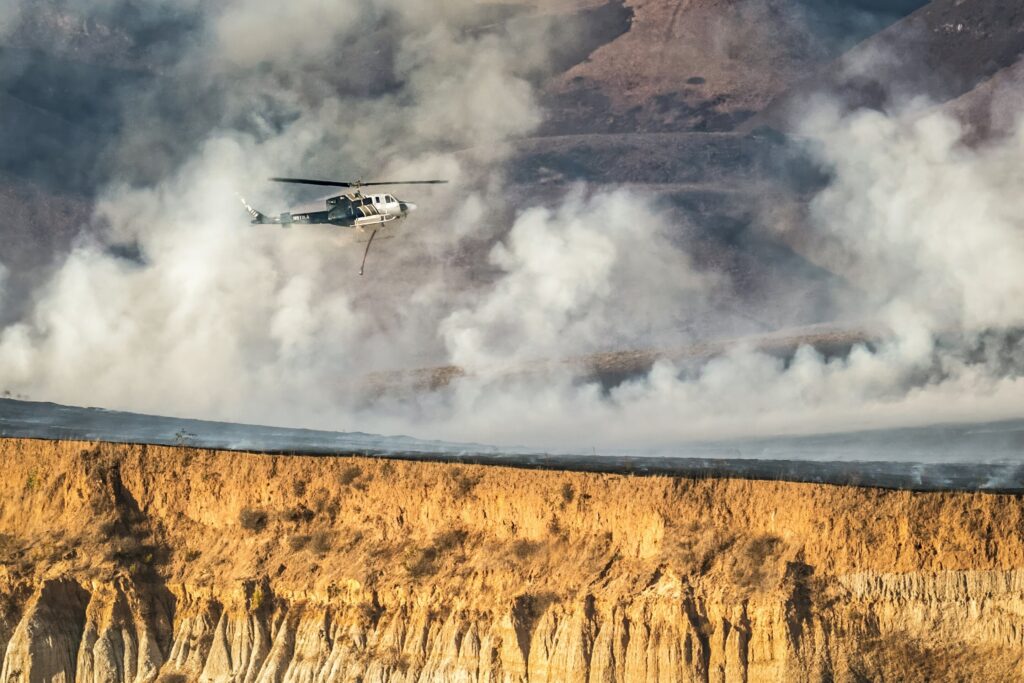

Credit: Unsplash/CC0 Public Domain
In fire-prone areas, water is not the only thing used to extinguish flames. Wildland firefighters also apply chemical or synthetic suppressants. RESEARCHERS reporting IN Environmental Science and Technology Letters investigated whether these suppressors could be a source of the high levels of metals sometimes found in waterways after wildfires are extinguished.
Some products they investigated contained high levels of at least one metalincluding chromium and cadmium, and may contribute to the growth of the post-fire environment.
“Fires are linked to the release of toxic heavy metals into the environment, but until now, it was assumed that these metals came from natural resources like soil,” says Daniel McCurry, the study’s principal investigator. “We now know that fire retardants may contribute to these metal releases.”
Fire suppression products intended to prevent fire activity before and after water evaporates, includes fire retardants, water boosters and foams. As fires have become more frequent and severe, greater volumes of water along with chemical and synthetic suppressants – sprayed from the ground and dropped by aircraft – have been required to extinguish them.
Although manufacturers identify most of the active ingredients in suppressants, some components are proprietary. In addition, previous researchers have observed increased concentrations of potentially toxic metals in soil and streams after wildfires.
So McCurry and colleagues at the University of Southern California wondered if the presses contained metals and could contaminate the environment.
The researchers tested samples from 14 fire extinguishing products sold by commercial vendors. They analyzed the samples for 10 metals that have known toxicity or are regulated by the US Environmental Protection Agency (EPA).
Each product contained at least one metal in a concentration that exceeded EPA’s Maximum Contaminant Level regulations for drinking water.
In particular, the two containment products classified as fire retardants contained eight metals (chromium, cadmium, arsenic, lead, vanadium, manganese, antimony, and thallium) that far exceeded EPA drinking water regulations. And one of the retardants exceeded California’s hazardous waste regulations for three of those metals.
The researchers say these results show the potential for fire retardants to contaminate aquatic environment and potentially drinking water, if these products enter water bodies.
The volume of fire retardants has dropped to wild fires in the US between 2009 and 2021, researchers determined that the total amount of metals applied was variable from year to year, but generally increased over time. And for a fire in Southern California, they estimate that the increased concentration of cadmium in a nearby stream can be explained by 31% of the reported fire retardant used to control the fire.
They say these results show that firefighting activities can contribute to high levels of metals in the environment, but that more work is needed to determine the potential risks to humans and environmental health.
More information:
Marella H. Schammel et al, Metals in Fire Suppressors, Environmental Science and Technology Letters (2024). DOI: 10.1021/acs.estlett.4c00727
Provided by
American Chemical Society
citation: Some wildfire suppressants contain heavy metals and may contaminate the environment (2024, October 30) retrieved on October 30, 2024 from https://phys.org/news/2024-10-wildfire-suppressants-heavy-metals-contaminate. html
This document is subject to copyright. Except for any fair agreement for study or private research purposes, no part may be reproduced without written permission. The content is provided for informational purposes only.